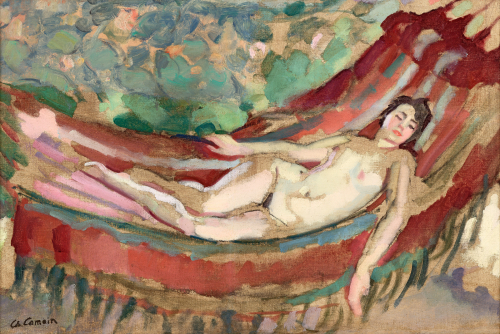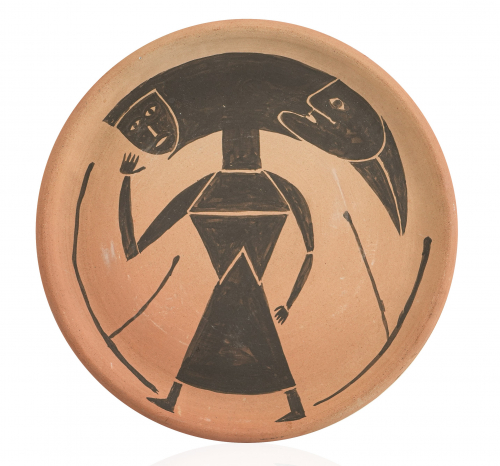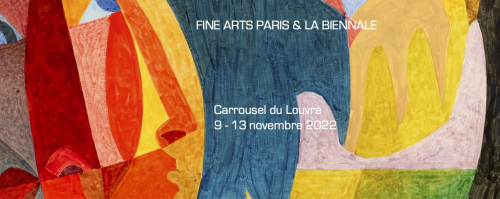Victor Brauner – The Inner Image
A Romanian Youth at Odds with Tradition
Victor Brauner was born on June 15, 1903, in the small town of Piatra Neamț, Romania. His family later moved to Bucharest, where, at the age of sixteen, he enrolled in the city’s School of Fine Arts.
Brauner’s artistic vision quickly clashed with academic norms, and his work was considered scandalous. He left the institution shortly after.
In 1924, he held his first solo exhibition and published the Manifesto of Picto-Poetry in the avant-garde magazine 75 HP, which he co-founded with Romanian poet Ilarie Voronca.
The magazine, though short-lived (only one issue), was the only Romanian avant-garde journal of the period and marked Brauner’s early engagement with Dada and experimental forms.
Paris and the Surrealist Encounter
In 1930, Brauner traveled to Paris, where he met André Breton and became involved with the Surrealist movement.
Breton wrote the preface to Brauner’s first Parisian exhibition at Galerie Pierre Loeb, already sensing in him a visionary apart—a painter whose solitary voice would one day diverge from the group.
Brauner was a contemplative, a silent observer of the world he often perceived as hostile. He developed a mental universe, filled with symbolic images and warnings, as though painting was a form of clairvoyance.
He kept a cautious distance from group dynamics, wary of artistic ideologies that might hinder freedom.
Return to Romania and the First Exile
In the mid-1930s, Brauner returned to Romania, where he faced the rise of fascism and antisemitism. He contributed to progressive newspapers, but the repression became unbearable. In 1938, knowing he was being watched, he fled again to France.
That same year, in a violent altercation, Brauner lost an eye—an incident that deeply shaped his imagination.
From that moment, his art turned toward dreamlike, metaphorical compositions, populated by "somnambulist images", caught between consciousness and the subconscious.
Despite hardship, he remained in contact with the Surrealists (having officially joined the group in 1934), while nurturing an increasingly independent path.
Inner Exile and War-Time Creation
During the war, Brauner took refuge in unoccupied France. Protected by friends, he moved between the Pyrenees, Marseille, and the Hautes-Alpes.
With limited means, he created using modest materials: wax, coffee, collages, and found objects.
In 1945, he returned to Paris and established a studio in the former workspace of Henri Rousseau, an omen he considered significant.
Break from Surrealism and the Search for Autonomy
In 1947, Brauner took part in the International Surrealist Exhibition at Galerie Maeght. Yet by 1948–1949, he broke definitively with the Surrealist circle, which then included Miró, André Masson, Max Ernst, and others.
As Breton had predicted, Brauner sought his own path—one that prioritized solitude over notoriety, vision over doctrine.
He believed independence of thought was essential to the creative act.
From this point forward, Brauner’s art centered on hybrid beings—anthropomorphic figures, somewhere between animal, object, and spirit.
The Final Dream
Until his death in 1966, Victor Brauner continued to cultivate his inner world, evolving it with new symbols and layers.
Toward the end of his life, facing illness and psychological fatigue, he created a final group of works: "Mythology and Mother’s Day", a series of object-paintings that served as both a testament and farewell.
These late works reveal a mind both playful and melancholic—a lucid observer of modern chaos, whose art remained, to the end, deeply personal, poetic, and unclassifiable.
BRAFA 2024
28 January 2024 - 4 February 2024

BRAFA 2023
28 January 2023 - 5 February 2023




